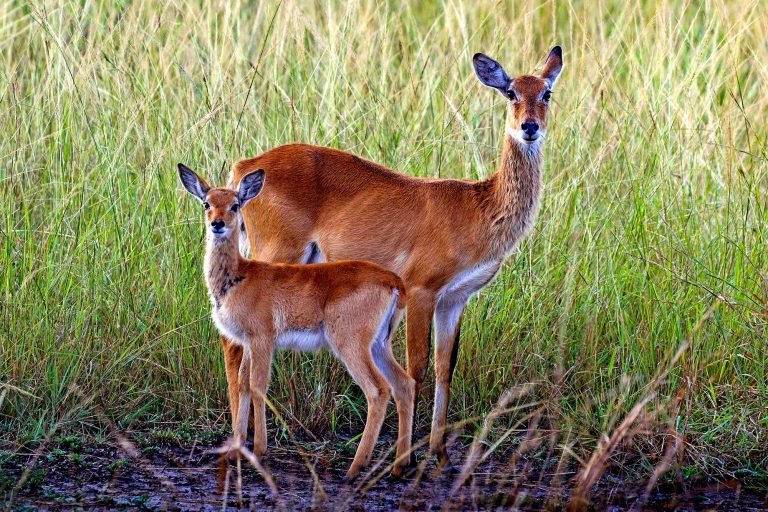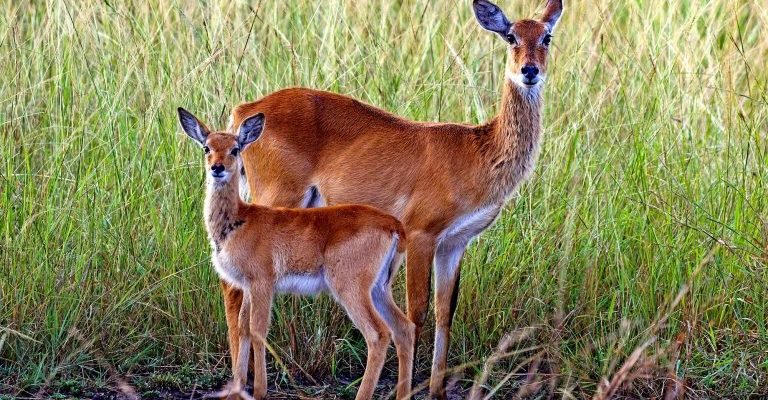
You might be wondering why these antelopes matter so much. Think of the Ugandan kob as a key that helps unlock various doors in their environment. From influencing plant growth to supporting predator populations, their presence—or absence—can have ripple effects throughout their habitat. So, let’s dive into the Ugandan kob’s unique role in its ecosystem, exploring how this graceful creature contributes to the balance of life.
What is the Ugandan Kob?
The Ugandan kob is a medium-sized antelope found primarily in Uganda, although you can also spot them in parts of neighboring countries like South Sudan and the Democratic Republic of Congo. Sporting a light brown coat with distinctive white markings, they’re often seen in groups grazing in open grasslands or near water sources. A male kob can weigh up to 100 kg (220 lbs), while females are usually lighter at around 50 kg (110 lbs).
One of the fascinating features of the Ugandan kob is the males’ impressive horns, which can grow up to 90 cm (35 inches) in length. These horns are used in displays of dominance as well as in fights with other males during the mating season. Honestly, watching these interactions can feel like witnessing a soap opera unfold in the wild!
But their looks and behaviors aside, what exactly makes the Ugandan kob so important in its ecosystem? Let me explain.
Grazers of the Savanna
The Ugandan kob primarily feeds on grasses, making them essential grazers in their habitat. By munching on these plants, they help maintain the health of grasslands and prevent overgrowth. This grazing phenomenon can be likened to trimming a garden; if left untended, the grasses could choke out other plants that also rely on sunlight and nutrients.
Their selective foraging habits also allow some grass species to thrive while keeping others in check. This balance is crucial because a diverse plant community supports a variety of other wildlife. When the kob grazes, it doesn’t just impact the grasses—they also create a dynamic environment for insects and other small creatures that rely on this habitat.
You might be wondering how their grazing specifically affects plant health. Well, when kobs eat grass, they not only control plant growth but also stimulate new shoots to emerge, which can improve soil health and invite other species to the area. It’s a cycle of life, and the Ugandan kob helps keep it spinning!
Predator-Prey Relationships
Let’s chat about the predator-prey dynamic. The Ugandan kob is a significant food source for larger carnivores, particularly lions and leopards. When you think about it, they form a crucial link in the food chain. Without the kob, many predators would struggle to thrive, potentially causing a ripple effect throughout the ecosystem.
Imagine the savanna—its inhabitants are all interconnected. If kobs were to decline, predators might turn their attention to smaller prey, which could lead to a population surge in those animals. This unexpected shift can unbalance the ecosystem, causing issues like overgrazing or a decline in plant diversity. So, the next time you see a kob bounding across the landscape, remember: it’s not just a pretty sight; it’s also pivotal for predator populations.
Additionally, the presence of kobs can influence the hunting behavior of predators. For instance, when kobs are abundant, predators will often focus their hunting efforts on them rather than other species. This natural selection helps maintain balance among different animal populations in their habitat.
Habitat Modification and Biodiversity
The Ugandan kob doesn’t just help maintain their ecosystem through grazing and serving as prey; they also play a role in shaping their environment. Their presence can influence vegetation patterns and even soil quality.
As they move through their habitat, kobs clear paths and create trails. This behavior allows sunlight to reach the ground, promoting the growth of various plant species. The trails they carve become highways for other animals, enabling access to food and water sources. It’s like building a network of roads in a bustling city, where multiple species can thrive.
Moreover, when kobs congregate in certain areas, their droppings enrich the soil with nutrients. This fertilization can lead to more robust plant growth, supporting a wider variety of creatures. A diverse ecosystem filled with various plants attracts different insects, birds, and even other mammals, creating a rich tapestry of life.
You might be surprised to learn how crucial this role is for maintaining biodiversity. By influencing both the plant and animal population dynamics, the Ugandan kob plays a starring role in the overall health of its ecosystem.
Conservation and Future Challenges
Despite their important role, Ugandan kobs face numerous challenges that threaten their populations. Habitat loss due to agriculture, poaching, and climate change are significant threats. As human activities expand, the delicate balance of ecosystems is increasingly at risk.
Conserving the Ugandan kob is essential for maintaining the integrity of their ecosystems. You might be wondering what can be done. Well, conservation efforts can focus on protecting their habitats, enforcing anti-poaching laws, and raising awareness about their ecological importance.
Local communities can participate in conservation through eco-tourism, where visitors come to observe and learn about these beautiful creatures in their natural environment. This not only helps support local economies but also fosters a sense of pride and responsibility to protect the wildlife.
Together, we can make a difference for the Ugandan kob and the ecosystems they help sustain.
The Ugandan kob is more than just an exquisite antelope; it’s a cornerstone of its ecosystem. Through grazing, supporting predator populations, and influencing habitat dynamics, these animals play a vital role in maintaining ecological balance. As their habitats face increasing threats, it’s crucial to recognize their significance and support conservation efforts.
So, the next time you find yourself captivated by the sight of a Ugandan kob, remember that it represents a greater story—one of interconnectedness, resilience, and the delicate balance of life in the savanna. It’s up to all of us to ensure that this incredible species continues to flourish for generations to come.

